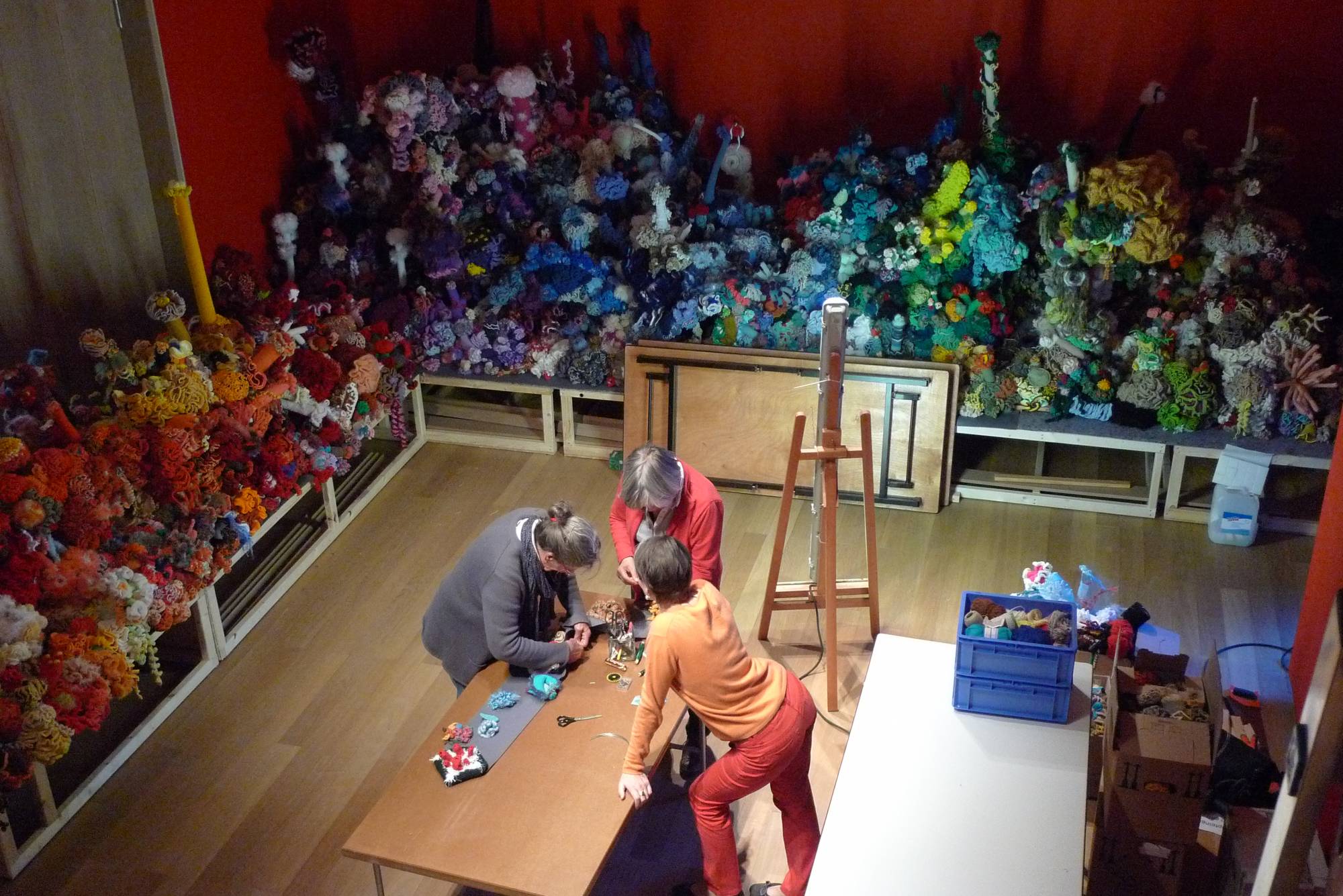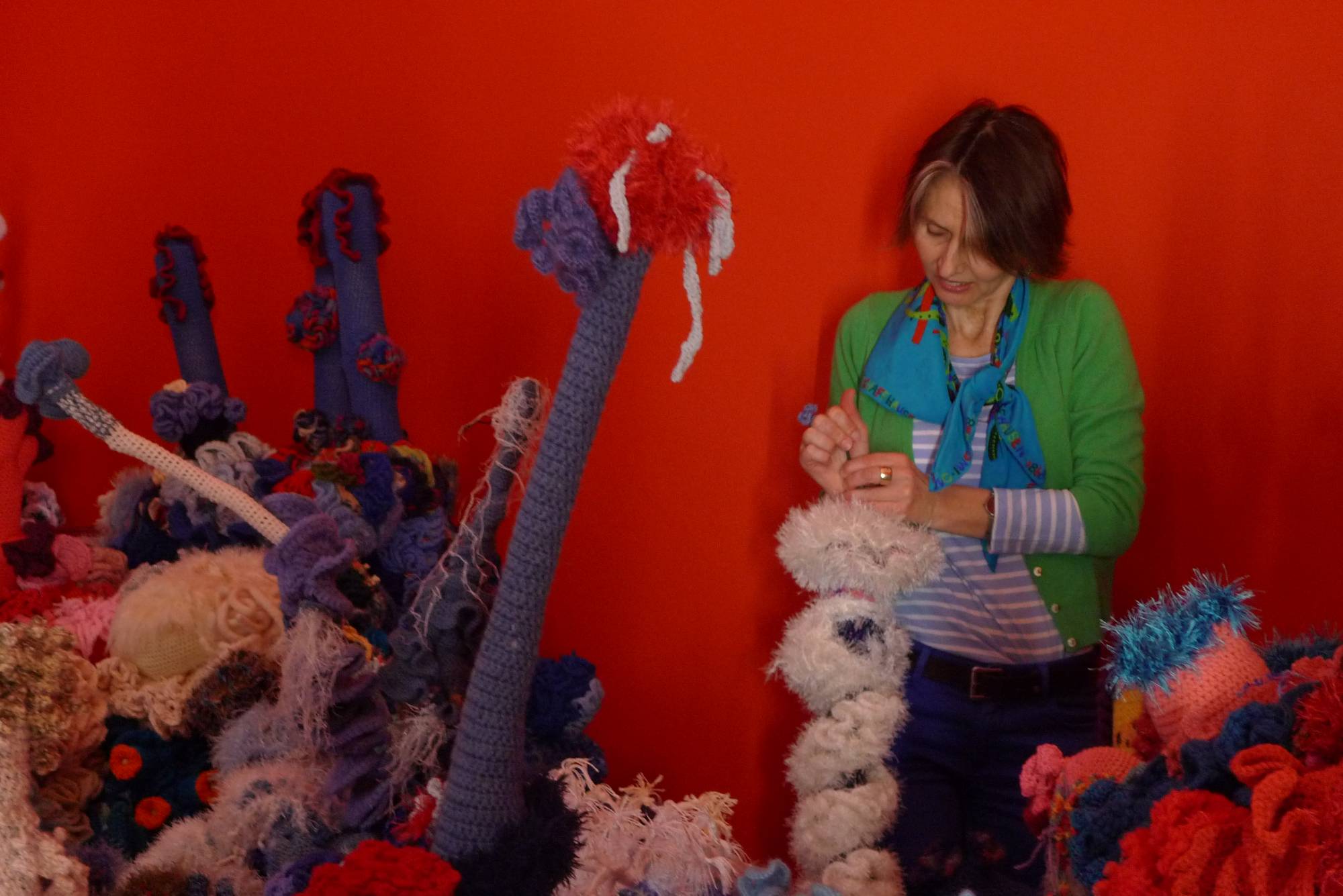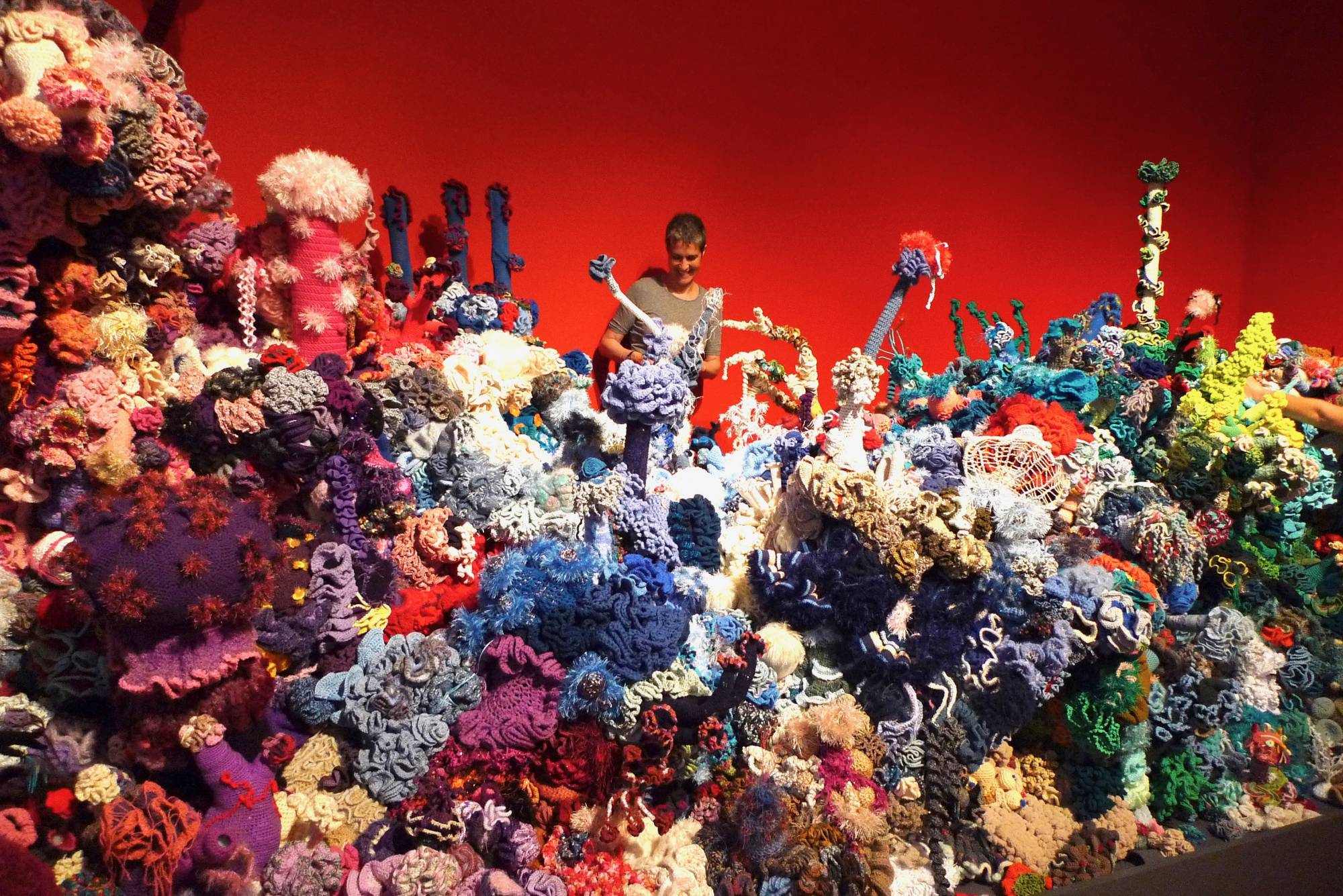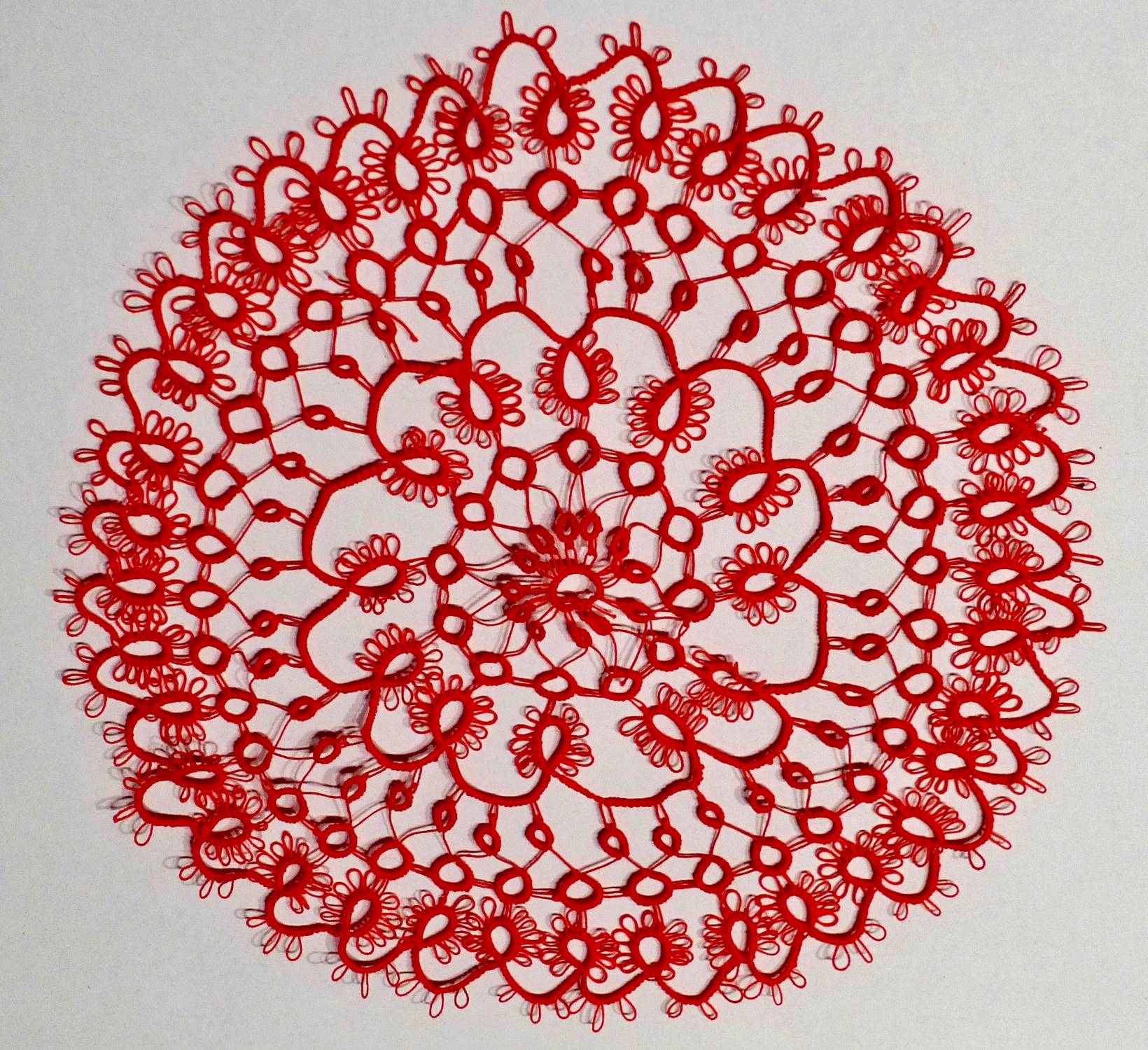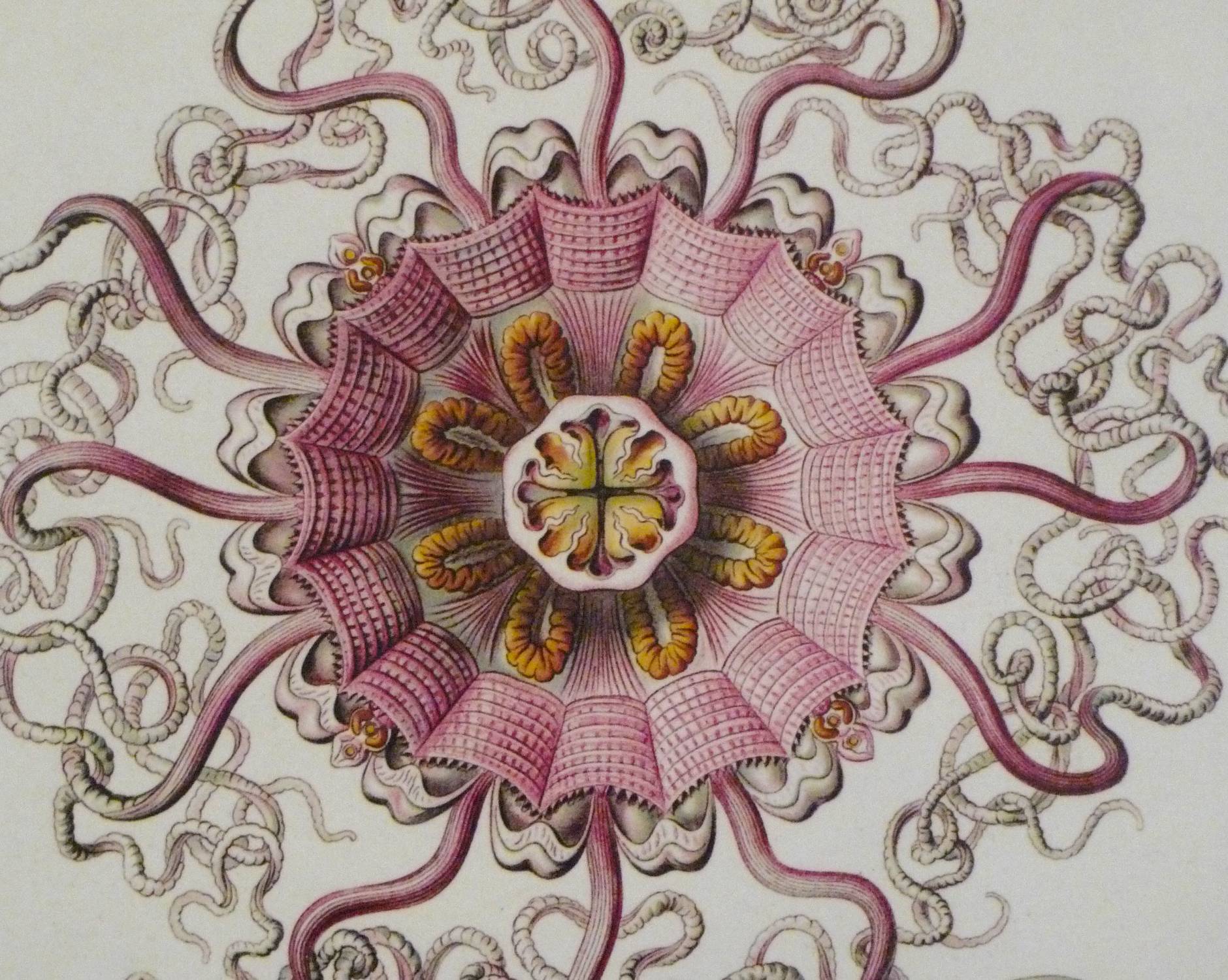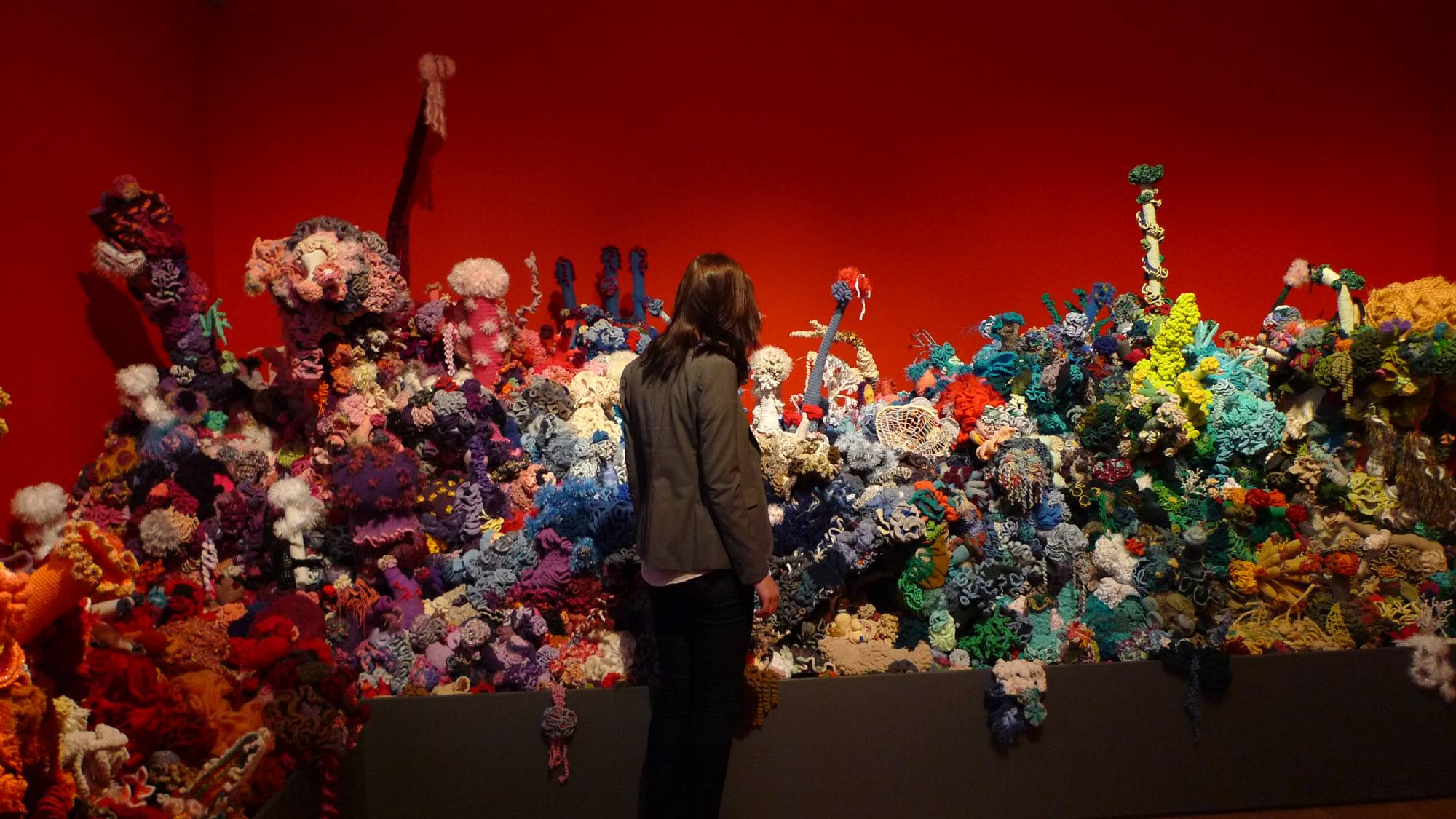Föhr Satellite Reef
June 10 – September 16, 2012
Museum Kunst der Westküste, Alkersum/Föhr, Germany
In June 2012 the Föhr Reef debuted at the Museum Kunst der Westküste on the island of Föhr in the North Sea, off the coast of Germany and Denmark.
More than 700 people contributed corals – pieces came from all over Germany and Denmark, and from Holland, Luxembourg, Switzerland and Austria. In total more than 5000 corals were made, including some exquisite pieces of bobbin lace and tatting, traditional handicrafts for which the region is famous.
Displayed against the background of a Red Sea, the Föhr Reef marks the apotheosis of the “rainbow style” of Crochet Reef curation. The IFF applauds this stunning work from the women of northern Europe.
The seeds of the Föhr Reef were planted in 2010 when museum director Thorsten Sadowsky read an article in the German paper Die Zeit about the Reef project. The MKDW was then a new institution, recently opened. Its mission was to focus around the theme of the sea and coast of northern Europe. In addition to housing a core collection of paintings depicting “the grandeur of the sea and the varieties of life along the North Sea coast,” the Museum was committed to becoming a hub for contemporary art and cross-border dialogue. Föhr resides at the boundary of modern-day Germany and Denmark, and during its history the island has been claimed by both nations. The Crochet Reef‘s messages regarding ocean ecology, community engagement, and global warming’s impact on marine life spoke to the Museum’s core concerns.
Workshops to kick-off the Föhr Satellite Reef began in January 2012 when the Museum hosted Margaret on a visit to the island. More than 200 people participated, with a ferry-load of participants traveling from Tondern on the Danish mainland. Many were expert handicrafters who had already begun crocheting innovative corals, adding local flavor to the crochet “tree of life.”
Over the coming months the Museum held weekly workshops with tea and cakes served by staff of the onsite cafe Gretjens Gasthof. Gatherings became a focus of community building with landfrauen (farmers wives) and “city women” (mostly summer visitors) bonding over their yarn. In Germany’s rather formal culture, people who have known each other for decades often still address one another by surname. At Reef events, Christian names quickly became the norm, cutting through age-old convention. “The project became an embodiment of border crossing across many social lines” Sadowsky said. “It’s a been very important way for bringing the people of the island together.”
The project also played a regenerative role in the life of the Museum. Just months before the show was due to open, the Museum was damaged by a fire and its major galleries closed. Growing the Föhr Reef was a “beautiful kind of healing” process as we recovered from the fire, says staff member Lea Heim.
Lea, who handled the incoming packages of coral, noted that some arrived with no more address than “Föhr Reef, Alkersum, Germany.” Local women were also recipients of enigmatically-labelled bundles, and the island’s postmen soon got to know whom to entrust with the international tide of oddly-shaped mail.
With so much coral pouring in, curating the Föhr Reef was a major undertaking. Museum staffer Gabriella Von Hollen-Heindorf spearheaded a month-long effort, along with fifteen other core Föhr reefers. A huge substructure was built by the Museum’s master carpenter and the entire structure breaks into sections for transport. After showing in Föhr, the reef was exhibited in the Tøndern Museum in Denmark.
As the curatorial team honed their room-sized sculpture, they realized the importance of upward thrust and contributors took on the task of making ever-taller spires. “It really became a challenge who could make the tallest.”
In 2014–2015, a newly curated section of the Föhr Satellite Reef was exhibited in the exhibition Welcome to the Anthropocene at the Deutsches Museum in Munich.
Lace dollie by Gertrud Krichau Andersen from the Föhr Satellite Reef and medusa illustration by Ernst Haeckel, from Kunstforms in Nature.

